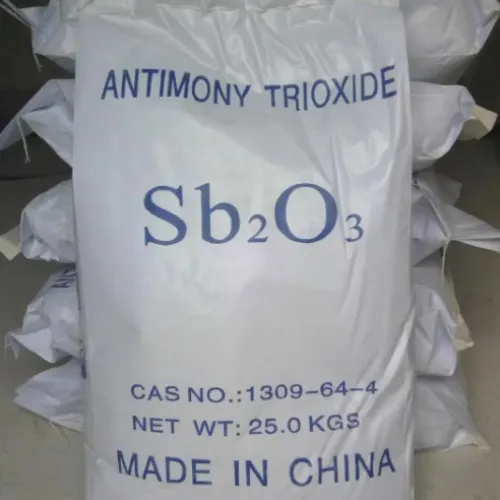Warning: Undefined array key "title" in /home/www/wwwroot/HTML/www.exportstart.com/wp-content/themes/1198/header.php on line 6
Warning: Undefined array key "file" in /home/www/wwwroot/HTML/www.exportstart.com/wp-content/themes/1198/header.php on line 7
Warning: Undefined array key "title" in /home/www/wwwroot/HTML/www.exportstart.com/wp-content/themes/1198/header.php on line 7
Warning: Undefined array key "title" in /home/www/wwwroot/HTML/www.exportstart.com/wp-content/themes/1198/header.php on line 7
- Afrikaans
- Albanian
- Amharic
- Arabic
- Armenian
- Azerbaijani
- Basque
- Belarusian
- Bengali
- Bosnian
- Bulgarian
- Catalan
- Cebuano
- China
- China (Taiwan)
- Corsican
- Croatian
- Czech
- Danish
- Dutch
- English
- Esperanto
- Estonian
- Finnish
- French
- Frisian
- Galician
- Georgian
- German
- Greek
- Gujarati
- Haitian Creole
- hausa
- hawaiian
- Hebrew
- Hindi
- Miao
- Hungarian
- Icelandic
- igbo
- Indonesian
- irish
- Italian
- Japanese
- Javanese
- Kannada
- kazakh
- Khmer
- Rwandese
- Korean
- Kurdish
- Kyrgyz
- Lao
- Latin
- Latvian
- Lithuanian
- Luxembourgish
- Macedonian
- Malgashi
- Malay
- Malayalam
- Maltese
- Maori
- Marathi
- Mongolian
- Myanmar
- Nepali
- Norwegian
- Norwegian
- Occitan
- Pashto
- Persian
- Polish
- Portuguese
- Punjabi
- Romanian
- Russian
- Samoan
- Scottish Gaelic
- Serbian
- Sesotho
- Shona
- Sindhi
- Sinhala
- Slovak
- Slovenian
- Somali
- Spanish
- Sundanese
- Swahili
- Swedish
- Tagalog
- Tajik
- Tamil
- Tatar
- Telugu
- Thai
- Turkish
- Turkmen
- Ukrainian
- Urdu
- Uighur
- Uzbek
- Vietnamese
- Welsh
- Bantu
- Yiddish
- Yoruba
- Zulu
سېنتەبىر . 29, 2024 07:42 Back to list
The Role of Propylene Glycol in Efficient Heating System Performance and Safety
The Role of Propylene Glycol in Heating Systems
Propylene glycol is a synthetic organic compound that has gained significant traction in various applications, particularly in heating systems. Its unique properties make it an excellent choice for use as an antifreeze agent, heat transfer fluid, and in other thermal management practices. In this article, we will explore how propylene glycol functions in heating systems, its advantages, and important considerations for its use.
What is Propylene Glycol?
Propylene glycol (PG) is a colorless, odorless, and tasteless liquid that is hygroscopic and has a low toxicity profile. It is derived from petroleum products through a series of chemical processes, primarily involving the hydration of propylene oxide. The compound is widely used in food, pharmaceuticals, cosmetics, and more importantly, in heating systems.
Role in Heating Systems
In heating systems, especially in hydronic heating and cooling setups, propylene glycol is commonly mixed with water to create a heat transfer fluid (HTF). This mixture circulates through pipes and radiators, helping to either absorb heat from the combustion process (in boilers, for example) or release heat to the environment. The addition of propylene glycol lowers the freezing point of the mixture, making it ideal for use in applications where temperatures can dip below freezing.
Benefits of Using Propylene Glycol
1. Anti-Freeze Properties One of the most notable benefits of propylene glycol is its ability to prevent freezing in extreme cold conditions. A mixture of propylene glycol and water can remain fluid even at temperatures as low as -50°F (-45°C) depending on the concentration used. This ensures that heating systems operate efficiently in cold climates.
2. Non-toxic Unlike ethylene glycol, which is also commonly used in heating systems but is toxic to humans and animals, propylene glycol is generally recognized as safe (GRAS) by the FDA. This makes it suitable for use in environments where accidental leaks can occur, such as food processing facilities and residential systems near living spaces.
propylene glycol in heating systems

3. Enhanced Heat Transfer The thermal conductivity of propylene glycol-water mixtures is generally better than that of plain water. This allows for improved heating efficiency and faster heat distribution throughout the system.
4. Corrosion Inhibition Propylene glycol not only serves as an antifreeze but also protects metal components within the heating system. It can help reduce corrosion, which prolongs the lifespan of pipes, radiators, and other equipment, thereby reducing maintenance costs over time.
5. Compatibility It is compatible with various materials commonly found in heating systems, including metals and plastics, making it versatile for a wide range of applications.
Considerations and Guidelines
While propylene glycol offers numerous advantages, there are important considerations for its use in heating systems. The concentration of propylene glycol in water must be carefully regulated to achieve the desired freeze protection while maintaining efficiency. Typically, a concentration of 30% to 50% propylene glycol is used for antifreeze properties, but this can lead to reduced heat transfer efficiency if concentrations exceed recommended levels.
Another critical aspect is monitoring the pH levels of the propylene glycol solution since improper pH can lead to corrosion of system components. Regular maintenance checks are essential to ensure the longevity and efficiency of the heating system.
Conclusion
Propylene glycol is a valuable component in modern heating systems, providing essential antifreeze properties, non-toxic alternatives, enhanced heat transfer, and corrosion protection. Its compatibility with various materials makes it a versatile choice for both commercial and residential applications. However, users must be aware of concentrations and maintenance practices to maximize the benefits while minimizing potential drawbacks. As technology continues to advance, the role of propylene glycol in heating systems will likely evolve, further solidifying its place as a preferred solution in thermal management.
Latest news
-
Certifications for Vegetarian and Xanthan Gum Vegetarian
NewsJun.17,2025
-
Sustainability Trends Reshaping the SLES N70 Market
NewsJun.17,2025
-
Propylene Glycol Use in Vaccines: Balancing Function and Perception
NewsJun.17,2025
-
Petroleum Jelly in Skincare: Balancing Benefits and Backlash
NewsJun.17,2025
-
Energy Price Volatility and Ripple Effect on Caprolactam Markets
NewsJun.17,2025
-
Spectroscopic Techniques for Adipic Acid Molecular Weight
NewsJun.17,2025

